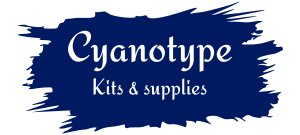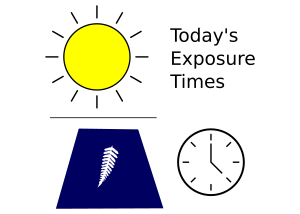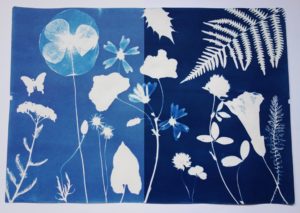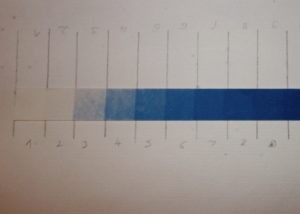Use this tool for estimated times for exposing cyanotypes in...
Read MoreHow to achieve leaf detail
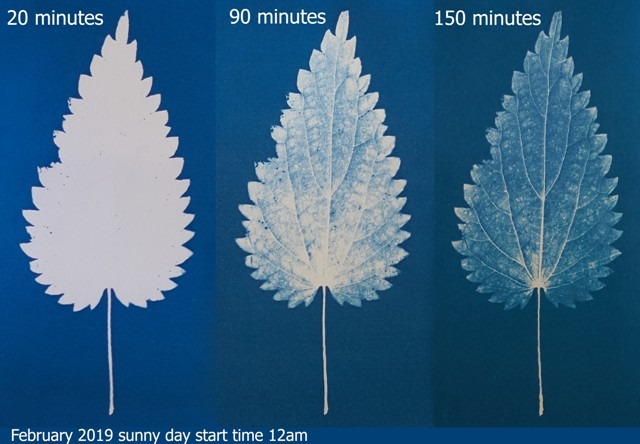
Making contact photograms is one of the types of cyanotype printing. Placing leaves and other objects on the coated cyanotype paper or fabric is the easiest way to make a cyanotype print. Creating a silhouette is a quick and simple process but if you want to achieve more detail in your final print you will have to watch out for certain things.
Exposure time
For a silhouette you can use your usual pointers for exposure time, the uncovered areas turn to a silvery greyish blue colour and you know that your cyanotype is exposed. This can take from a couple of minutes to 15-30 minutes depending on the time of year and weather conditions. If you want to see the details of the leaf in your final print you will probably have to expose for hours rather than minutes.
The three prints of the main picture on the top were made of the same leaf but the exposure times were very different from 20 minutes to 1.5 hours at midday and to 2.5 hours on a sunny day (in the winter). Depending on the weather and time of year you might even have to expose for days.
The only way to know if your leaf is exposed underneath is by looking, but by moving the leaves you can ruin your print so exposing multiple images or smaller versions can help or a split frame can come in handy.

Leaf detail
When the area below the leaf is exposed it will become more of a blueish colour and the detail won't wash out. This is what you are looking for if you want to see the details of the prints.
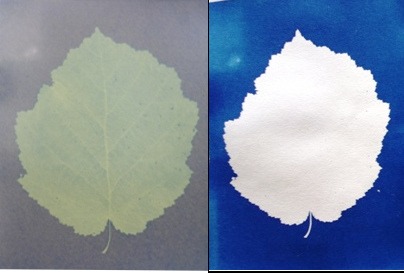
Silhouette
If the unexposed areas under the leaf are still yellow-green, even though you will see the details of the leaf this will wash out and disappear.
Choose the right leaf
Some leaves work better than others. This can be due to the thickness of the leaf or even the texture and shape. As some leaves are not flat good contact with the paper can be tricky, pressing leaves before exposing can help to make them completely flat or exposing them upside down might give a better contact and better results. Choose leaves that are not too thick as enough UV light has to get through the leaf to change the chemicals below.
Choosing when to finish an exposure depends on the desired colour and level of detail in the final image. Experimenting is always the key to achieve the best results.
Related Tutorials
How to achieve darker blues
Tutorial on how to achieve a darker blue in your...
Read MoreA3 Exposure
How to expose an A3 size print with two of...
Read More